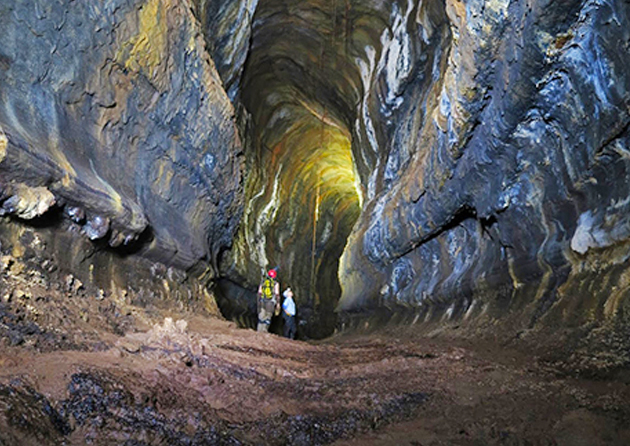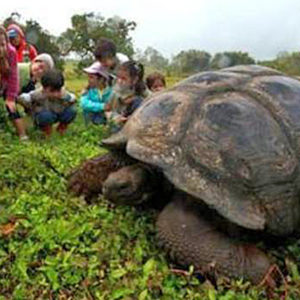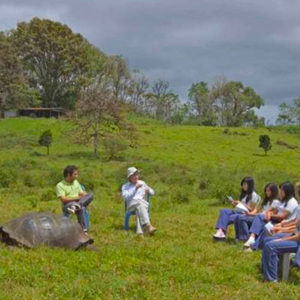
Mapping lava tubes
Aaron Addison, MSGISc, director of geographical information systems (GIS) and data services for Olin Library
Bob Osburn, MS, laboratory administrator for the Department of Earth and Planetary Sciences in Arts & Sciences
In addition to its extraordinary wildlife, the Galapagos Islands have another fascinating characteristic: lava tubes, a geographical feature caused by a very hot, voluminous and long-lasting eruption. Despite the islands’ fame, many of their lava tubes have never been explored. Addison and Osburn, who are also speleologists, have made three trips to map the tubes since 2009, most recently a 12-day trip in March 2013. Descending deep into the tubes, which are more than 300,000 years old, on the island of Santa Cruz, their group of cavers surveyed 19 caves for a total of 10 km. In March 2014, Addison will co-chair the 16th International Volcanospeleology Conference, which will be held on Santa Cruz.
Tracing a weedy evolution
Katherine E. Waselkov, PhD ’13 (Biology, Arts & Sciences)
With funding from the National Geographic Society, in April 2011 Waselkov conducted field research in the Galapagos on its four native and endemic Amaranthus species. She skipped across seven islands to survey the native and endemic Amaranthuspopulations, gathering data to place them in a worldwide phylogeny of the genus and determine the phylogeographic origin of the species. She found that their greatest threat is human development. While native/endemic populations on uninhabited islands are thriving, one variety, A. furcatus (listed as “vulnerable” on the International Union for Conservation of Nature’s Red List of Threatened Species for Ecuador), is likely extinct. When she visited its historical collection site, she found it entirely developed.
Teaching giant tortoises
Susan Flowers, MA ’98, assistant director, Institute for School Partnership
Stephen Blake, PhD, visiting scientist, Department of Biology in Arts & Sciences
The Galapagos tortoise, for which the archipelago is named, provides an excellent case study for learning about animal migration. Why do some tortoises migrate up and down the islands’ volcanic slopes, and some barely move at all? Why is it that only adults migrate? In early May, Flowers and Blake traveled to Galapagos to meet with collaborators from the State University of New York, the Max Planck Institute of Ornithology, the Galapagos National Park Service and the Charles Darwin Foundation in order to launch the next three-year phase of an ongoing program that integrates ecological research with outreach and education. Next, the team will work with educators on Galapagos and colleagues at the St. Louis and Houston zoos to develop middle- and high-school-level instructional materials based on their tortoise research. The educational materials will be pilot tested with teachers in St. Louis and on Galapagos, and then broadly disseminated.
![]() Listen to an interview with Stephen Blake at the National Geographic Society’s Newswatch website.
Listen to an interview with Stephen Blake at the National Geographic Society’s Newswatch website.



